 W
WThis is a list of dreadnought battleships of the Royal Navy of the United Kingdom.
 W
WThe British Royal Navy built a series of pre-dreadnought battleships as part of a naval expansion programme that began with the Naval Defence Act 1889. These ships were characterised by a main battery of four heavy guns—typically 12-inch (305 mm) guns—in two twin mounts, a secondary armament that usually comprised 4.7-to-6-inch guns, and a high freeboard. Primarily concerned with maintaining its "two-power standard" of numerical superiority over the combined French and Russian fleets, the Royal Navy built or purchased a total of fifty-two battleships of this type prior to the 1906 completion of the revolutionary all-big-gun Dreadnought, which gave the pre-dreadnoughts their name. William Henry White served as the Director of Naval Construction from 1885 to 1902 and thus oversaw the development of most of the pre-dreadnoughts.
 W
WHMS Achilles was an armoured frigate built for the Royal Navy in the 1860s. Upon completion in 1864 she was assigned to the Channel Fleet. The ship was paid off in 1868 to refit and be re-armed. When she recommissioned in 1869, she was assigned as the guard ship of the Fleet Reserve in the Portland District until 1874. Achilles was refitted and re-armed again in 1874 and became the guard ship of the Liverpool District in 1875. Two years later, she was rejoined the Channel Fleet before going to the Mediterranean in 1878. The ship returned to the Channel Fleet in 1880 and served until she was paid off in 1885.
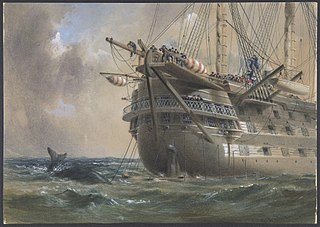 W
WHMS Agamemnon was a Royal Navy 91-gun battleship ordered by the Admiralty in 1849, in response to the perceived threat from France by their possession of ships of the Napoléon class.
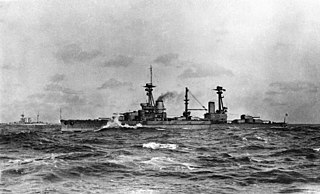 W
WHMS Agincourt was a dreadnought battleship built in the United Kingdom in the early 1910s. Originally part of Brazil's role in a South American naval arms race, she holds the distinction of mounting more heavy guns (fourteen) and more turrets (seven) than any other dreadnought battleship, in keeping with the Brazilians' requirement for an especially impressive design.
 W
WHMS Alexandra was a central battery ironclad of the Victorian Royal Navy, whose seagoing career was from 1877 to 1900. She spent much of her career as a flagship, and took part in operations to deter Russian aggression against Turkey in 1878 and the bombardment of Alexandria in 1882. She was affectionately known by her crew as Old Alex.
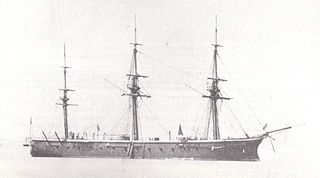 W
WHMS Bellerophon was a central battery ironclad built for the Royal Navy in the mid-1860s.
 W
WHMS Captain was an unsuccessful warship built for the Royal Navy due to public pressure. She was a masted turret ship, designed and built by a private contractor against the wishes of the Controller's department. The Captain was completed in April 1870 and capsized on 07 September 1870 with the loss of nearly 500 lives because of design and construction errors that led to inadequate stability.
 W
WHMS Dreadnought was an ironclad turret ship built for the Royal Navy during the 1870s. Construction was halted less than a year after it began and she was redesigned to improve her stability and buoyancy. Upon completion in 1879, the ship was placed in reserve until she was commissioned in 1884 for service with the Mediterranean Fleet. Upon her return 10 years later, she became a coast guard ship in Ireland for two years. The ship then became a depot ship in 1897 before she was reclassified as a second-class battleship in 1900. Dreadnought participated in the annual fleet manoeuvres for the next two years before she became a training ship in 1902. The ship was taken out of service three years later and sold for scrap in 1908.
 W
WHMS Erin was a dreadnought battleship of the Royal Navy, originally ordered by the Ottoman government from the British Vickers Company. The ship was to have been named Reşadiye when she entered service with the Ottoman Navy. The Reşadiye class was designed to be at least the equal of any other ship afloat or under construction. When the First World War began in August 1914, Reşadiye was nearly complete and was seized at the orders of Winston Churchill, the First Lord of the Admiralty to keep her in British hands and prevent her from being used by Germany or German allies. There is no evidence that the seizure played any part in the Ottoman government declaring war on Britain and the Entente Cordiale.
 W
WHMS Ganges was an 84-gun second-rate ship of the line of the Royal Navy, launched on 10 November 1821 at Bombay Dockyard, constructed from teak. She is notable for being the last sailing ship of the Navy to serve as a flagship, and was the second ship to bear the name.
 W
WHMS Hercules was a central-battery ironclad of the Royal Navy in the Victorian era, and was the first warship to mount a main armament of 10-inch (250 mm) calibre guns.
 W
WHMS Hotspur was a Victorian Royal Navy ironclad ram – a warship armed with guns but whose primary weapon was a ram.
 W
WHMS Indus was an 80-gun two-deck second-rate ship of the line of the Royal Navy, launched on 16 March 1839 at Portsmouth Dockyard.
 W
WHMS Inflexible was a Victorian ironclad battleship carrying her main armament in centrally placed turrets. The ship was constructed in the 1870s for the Royal Navy to oppose the perceived growing threat from the Italian Regia Marina in the Mediterranean.
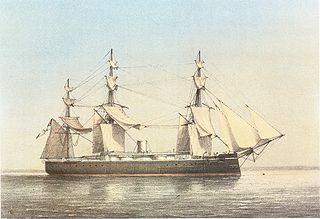 W
WHMS Monarch was the first seagoing British warship to carry her guns in turrets, and the first British warship to carry guns of 12-inch (300 mm) calibre.
 W
WHMS Neptune was an ironclad turret ship originally designed and built in Britain for Brazil, but acquired for the Royal Navy in 1878. Modifications to suit the Royal Navy took three years to complete and the ship did not begin her first commission until 1883 with the Channel Fleet. She was transferred to the Mediterranean Fleet in 1885, but refitted in Portsmouth in 1886–87. Neptune then became the coastguard ship for the 1st Class Reserve at Holyhead until 1893 when she was placed in reserve in Portsmouth. While she was being towed to the breakers in 1903, Neptune unintentionally rammed HMS Victory, then serving as a training hulk for the Naval Signal School, collided with HMS Hero, and narrowly missed several other ships. She was scrapped in Germany in 1904.
 W
WHMS Penelope was a central-battery ironclad built for the Royal Navy in the late 1860s and was rated as an armoured corvette. She was designed for inshore work with a shallow draught, and this severely compromised her performance under sail. Completed in 1868, the ship spent the next year with the Channel Fleet before she was assigned to the First Reserve Squadron in 1869 and became the coast guard ship for Harwich until 1887. Penelope was mobilised as tensions with Russia rose during the Russo-Turkish War of 1877–78 and participated in the Bombardment of Alexandria during the Anglo-Egyptian War of 1882. The ship became a receiving ship in South Africa in 1888 and then a prison hulk in 1897. She was sold for scrap in 1912.
 W
WHMS Prince Albert was designed and built as a shallow-draught coast-defence ship, and was the first British warship designed to carry her main armament in turrets. The ship was named after Prince Albert, the late husband of Queen Victoria. At her wish Prince Albert remained on the "active" list until 1899, a total of 33 years, by which time she had long ceased to be of any military value.
 W
WHMS Royal Sovereign was originally laid down as a 121-gun first-rate ship of the line of the Royal Navy. She would have mounted sixteen 8 in (200 mm) cannon, 114 32-pounder (15 kg) guns, and a 68-pounder (31 kg) pivot gun. With the rise of steam and screw propulsion, she was ordered to be converted on the stocks to a 131-gun screw ship, with conversion beginning on 25 January 1855. She was finally launched directly into the ordinary on 25 April 1857. She measured 3,765 long tons (3,825 t) burthen, with a gundeck of 240 feet 6 inches (73.30 m) and breadth of 62 feet (19 m), and a crew of 1,100, with engines of 780 nhp.
 W
WHMS Rupert was a battleship of the Victorian Royal Navy, whose principal weapon was designed to be her ram.
 W
WHMS Sultan was a broadside ironclad of the Royal Navy of the Victorian era, who carried her main armament in a central box battery. She was named for Sultan Abdülâziz of the Ottoman Empire, who was visiting England when she was laid down. Abdülâziz cultivated good relations with the Second French Empire and the British. In 1867 he was the first Ottoman sultan to visit Western Europe; his trip included a visit to England, where he was made a Knight of the Garter by Queen Victoria and shown a Royal Navy Fleet Review, with Isma'il Pasha of Egypt.
 W
WHMS Superb was an ironclad battleship designed by Sir Edward Reed for the Ottoman Navy, and was built in Britain by Thames Ironworks under the name of Hamidieh. She had both engines and sails.
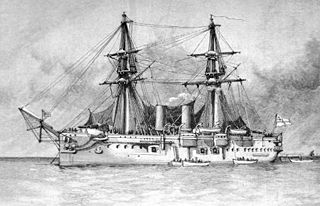 W
WHMS Temeraire was an ironclad battleship of the Victorian Royal Navy which was unique in that she carried her main armament partly in the traditional broadside battery, and partly in barbettes on the upper deck.
 W
WHMS Vanguard was a British fast battleship built during the Second World War and commissioned after the end of the war. She was the biggest and fastest of the Royal Navy's battleships, the only ship of her class, and the last battleship to be built.